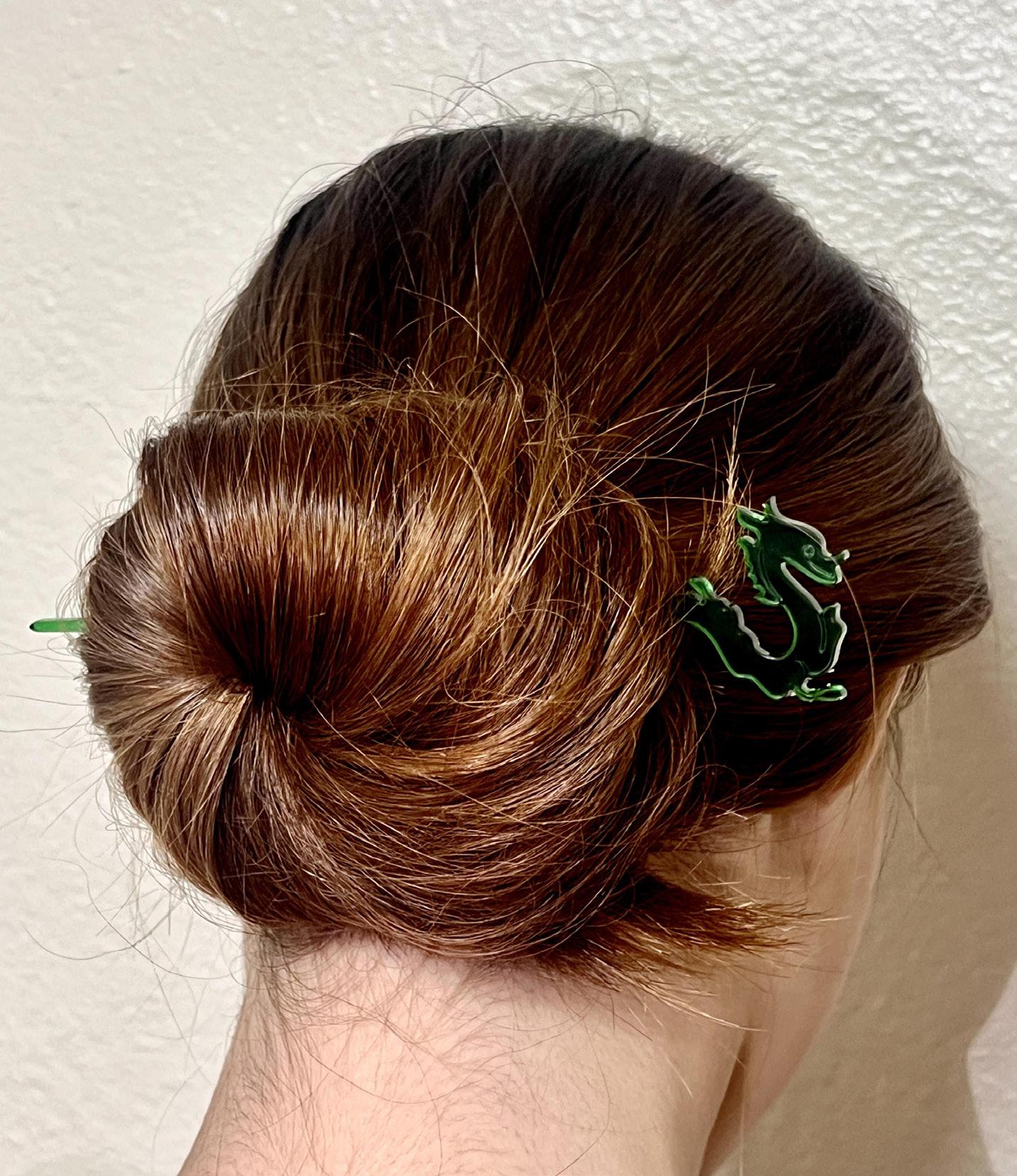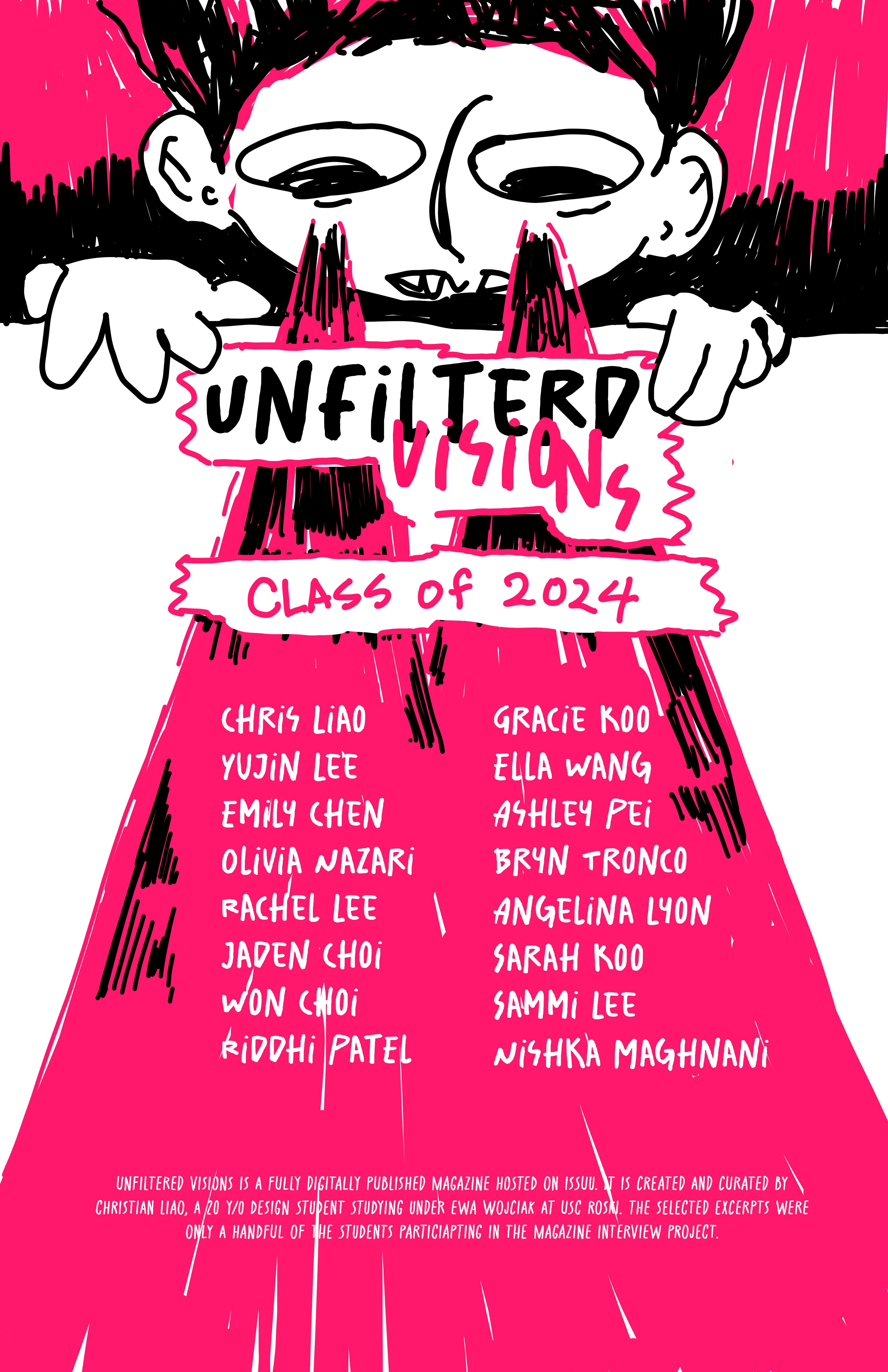


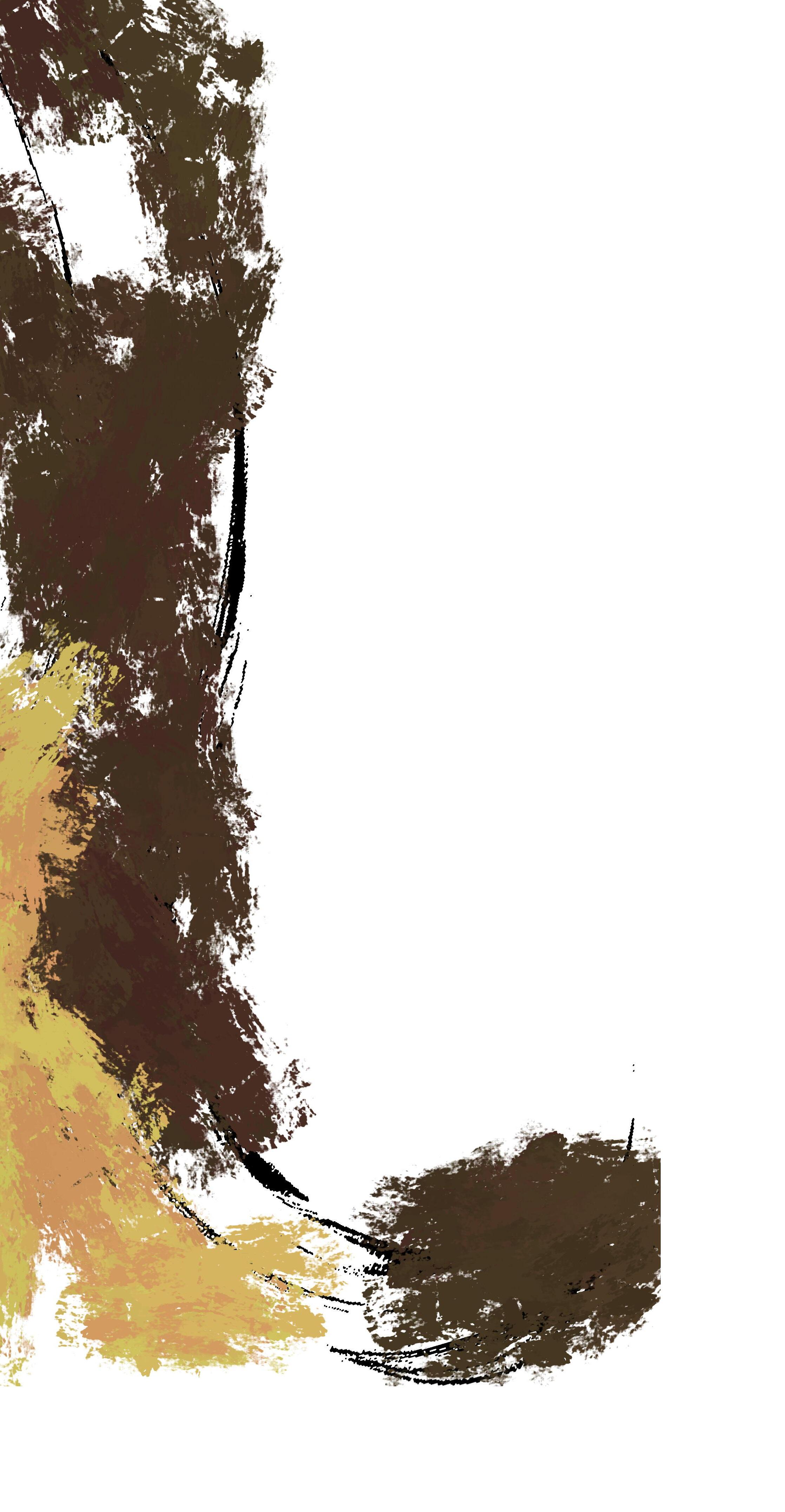





By Christian Liao
Once upon a time, there was a girl named Bryn Tronco who had a wild and itchy adventure that spanned across two countries. It all began around her 8th birthday, a special day celebrated in Luca, Italy. Her family had traveled there as part of her mom’s six-month sabbatical from teaching at West Virginia University. Bryn and her family had saved up for a year, planning the perfect European getaway, splitting their time between Italy and Croatia. But her excitement soon faded into confusion one day when, after brushing her hair, she noticed something small—a bug. Then another. And another. Lice. In Italy. On her birthday.
Her mom raced to the local pharmacy, picking up a special lice shampoo they thought would solve the problem. Bryn scrubbed her scalp with the smelly stuff, convinced that it was over. But lice are sneaky little creatures. They don’t just disappear, and soon enough, her whole elementary class in Italy had them. After battling the bugs for a while, it seemed her family had finally won, just in time to fly to Croatia for the next part of their adventure. Everything went smoothly. The beginning days spent in Croatia were spent wonderfully and without a clue of what would happen in the next couple of weeks.



But in a couple days time, the itching came back. This time, Bryn’s parents faced a new challenge: the language barrier. Croatian pharmacies weren’t exactly prepared for a detailed discussion on lice treatments in English. When her mom came back from the pharmacy, she brought a silicone-based product—not shampoo. Confused, they followed the directions, applying the gel to their hair. The silicone froze and suffocated the bugs, but lice are resilient. However, without thinking too hard about it, Bryn shared a bed with her mom and both ended itchy and restless. Soon, the whole family had lice—her siblings, too. Her poor

Bryn tried to make light of the situation. She started rhyming and singing about bugs with her mom, creating little songs to distract herself from the discomfort, but the aversion to creepy crawlies was hard to shake. Finally, the silicone gel seemed to do its job. The family







Fifth grade came around, and Bryn thought her lice-filled days were behind her. She had grown out her hair, but the memories of Italy and Croatia still itched at the back of her mind. It all came rushing back when, during a routine check at school, the nurse swiped the comb through Bryn’s hair and pulled out—yes, you guessed it—lice again. This time, Bryn didn’t tell her friends. She kept her distance, staying three feet away from everyone, quietly dealing with the situation as her parents stocked up on lice treatments in bulk.
She couldn’t escape it. Lice seemed to follow her everywhere, even to the hair salon. When she finally decided to get a pixie cut—a fresh start, a bold new look—it wasn’t enough. The stylist spotted eggs in her hair and denied her a proper cut.
Years later, Bryn could laugh about the experience, even trying to remember her songs and rhymes about bugs. But she’s still nervous about thrifting hats, and rightfully so. After all, once lice have touched your life three times, they leave an impression you can never quite shake.











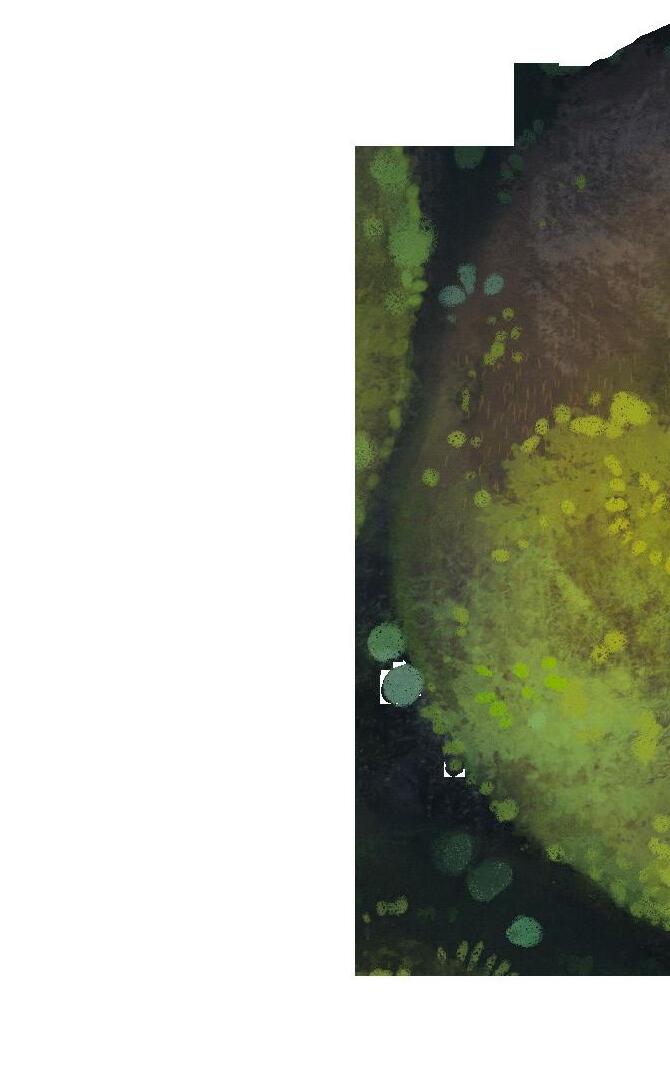
WRITTEN BY Emily Chen
Ashley’s summers had always been filled with art. Drawing and painting was a staple during those hot, sunny months, and she had often settled herself in at home, making illustrations, drawing digitally, and letting her creativity flow
The summer before her junior year of college, Ashley took a trip to Japan, going with her family: her mom, dad and older brother. It was the annual family trip that her family takes, and her first time in Japan. That summer in Japan was hot, humid, and a struggle to be outside, but it left her with only beautiful memories.
Having lived in Los Angeles, or more specifically San Bernardino county all her life, Ashley as more of a homebody, did not really travel often, mostly going on these larger family trips approximately once a year. Having never traveled alone, and always going on trips with her family, it was a time she cherished, and a time that
she wanted to make the most of. This was a chance for her to spend a purely relaxing time with family, and learn to enjoy the little things in life. She could take a chance to observe her surroundings, take photos, and just draw, painting out little scenes of Japan digitally through her iPad. There is only so much that one can do at home in terms of art, and before the summer, Ashley had begun to feel a little bit stuck in terms of creativity and what she could do with her illustration. With no particular direction and no specific goals when it came to art, she had hit a bottleneck. She did not really know what to draw nor did she have anything she really wanted to draw or felt particularly inspired by. This trip became an extraordinary opportunity to get out and explore, and be inspired by a place that she had never seen before. Her work over the summer became a journal of her time in Japan.
Besides just being an incredibly fun family vacation, the trip allwoed her to regain the enjoyment she found in drawing and painting; she was in a completely new location, somewhere she had never been before, and everything was fresh. Ashley realized how much she liked analyzing little details and observing nature as well as her love for painting backgrounds. She looked around more than she would before, taking note of the little differences and details that made a scene look like Japan. She took pictures of little flowers at the side of the road, moss-covered rocks next to a bench, and the clean roads that they traveled down to get to their sight-seeing locations. In Japan she could renew her perspective on the world and the subjects that she would illustrate, and almost see the world around her for the first time. In fact, she was truly seeing Japan for the first time and thus could notice things about the uniqueness of

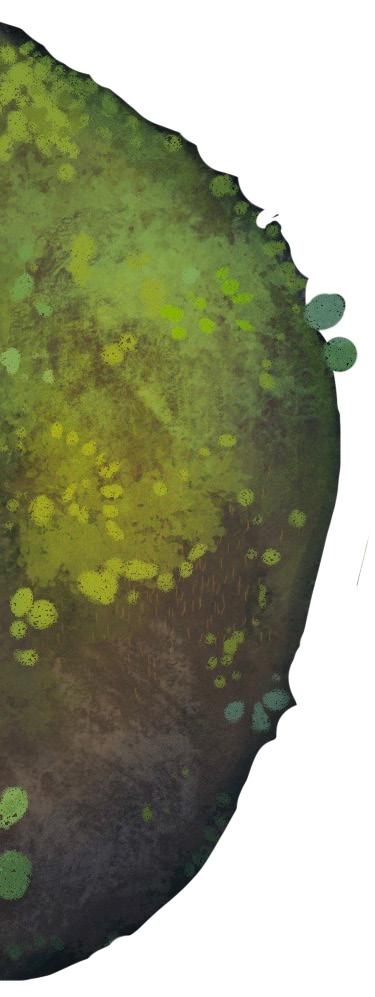
Japan that locals would not pay attention to. Due to finding the joy in observation, she could now begin to enjoy drawing again, and especially backgrounds, depicting the beautiful world within her eyes.
The digital paintings that she produced were not those big tourist locations or big city streets. Rather, she illustrated empty countryside streets, hydrangeas by the side of the road, a bento box, and more. These were small joys that she found in the world around her during that trip, and she chose to take the time to just sit, observe, and let herself draw. Japan is a fascinating place; it has both some of the most advanced cities as well as some of the most beautiful nature scenes. Interestingly, many of the scenes Ashley drew were those seemingly closer to nature, no person in sight. All of her illustrations are on a different day out of a ten-day

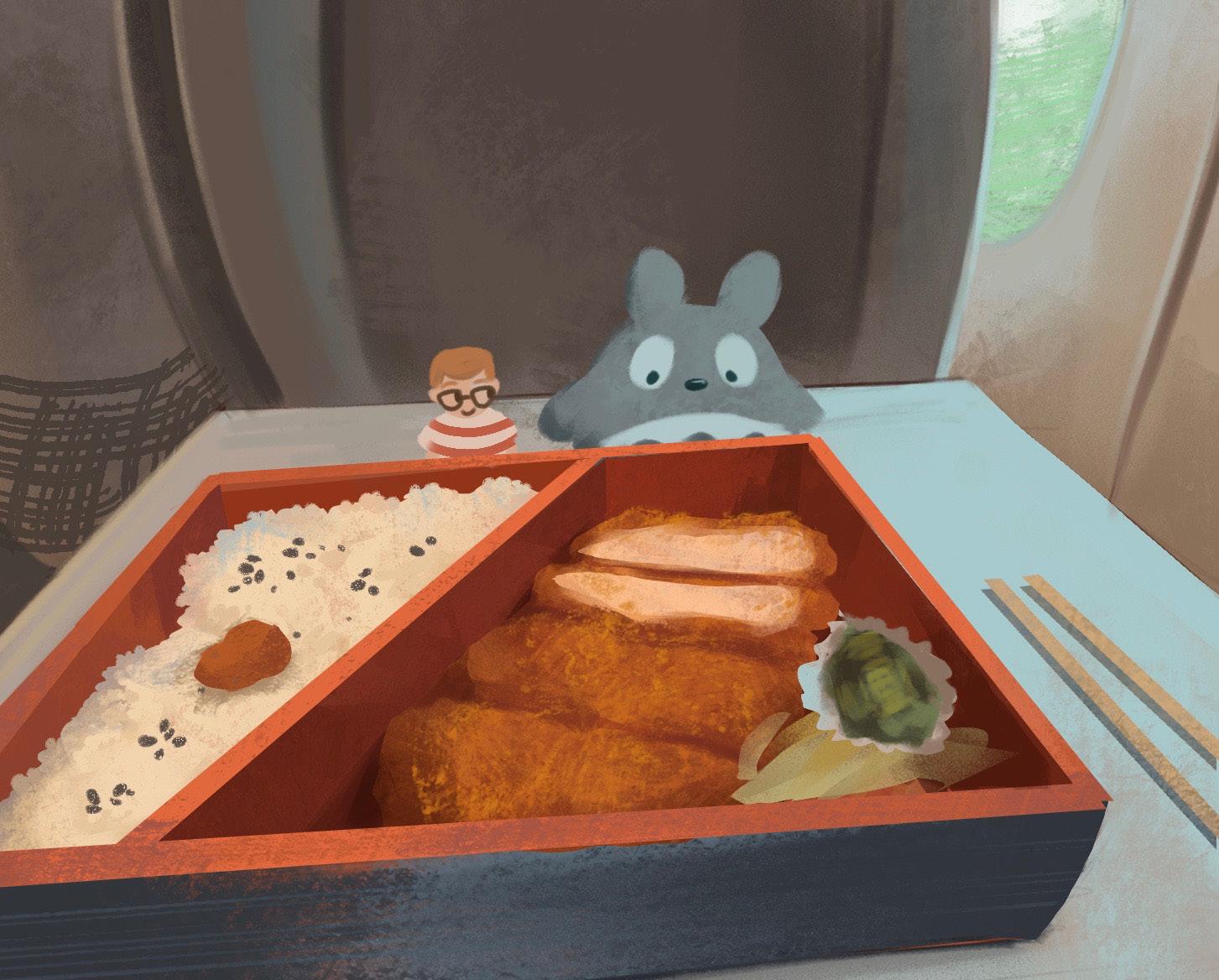
trip, yet they all maintain a specific voice, a feeling that they are seen through Ashley’s eyes. Filled with lots of greens, browns, and other earthy tones, her illustrations feel warm, comforting, and welcoming, and it is clear what she was drawn to as a SoCal native. In comparison to Los Angeles, Tokyo as another large city was a very different experience. Away from the yellow, drought-ridden California, she found joy in the natural beauty and greenery of Japan.
“Despite all the beauty of the scenery, the trip was bittersweet. It marked the past halfway point of Ashley’s time in university, and she was pulling closer to the end of her time as a student. Perhaps in the future she would be getting busier as graduation neared and her summers may be spent doing internships instead. Maybe she would spend her time job hunting and taking classes. A family trip like the one she took this summer might not be possible for a few years. It might even not come again.
childhood, as she and her brother move further into their adult lives.
But the trip wasn’t sad to Ashley. Rather, it gave her the chance to cherish family, the views, and be grateful for the opportunity to travel to such a beautiful location. With her loved ones, she could enjoy the clean streets, beautiful greenery, and unique culture of Japan. She could sit down amongst the lush lawns and just sit down and observe and get up to walk down the sidewalks lined with blue hydrangeas.
I really want to slow down the time we have together and notice the little things.
- ASHLEY
The passage of time is necessary to experience and Ashley knew she was no different. She was never sad and it was only always fun being in a new country and culture. She could buy cute merchandise and high quality stationary. She would sit with her family in a green environment
Her brother is going to start working soon. And her parents are getting older. This Japan trip could have been her last full family trip. This was something that she had kept in mind during her time in Japan; she wanted to make the most of this time with family. It could be the end of the annual family tradition that marked her
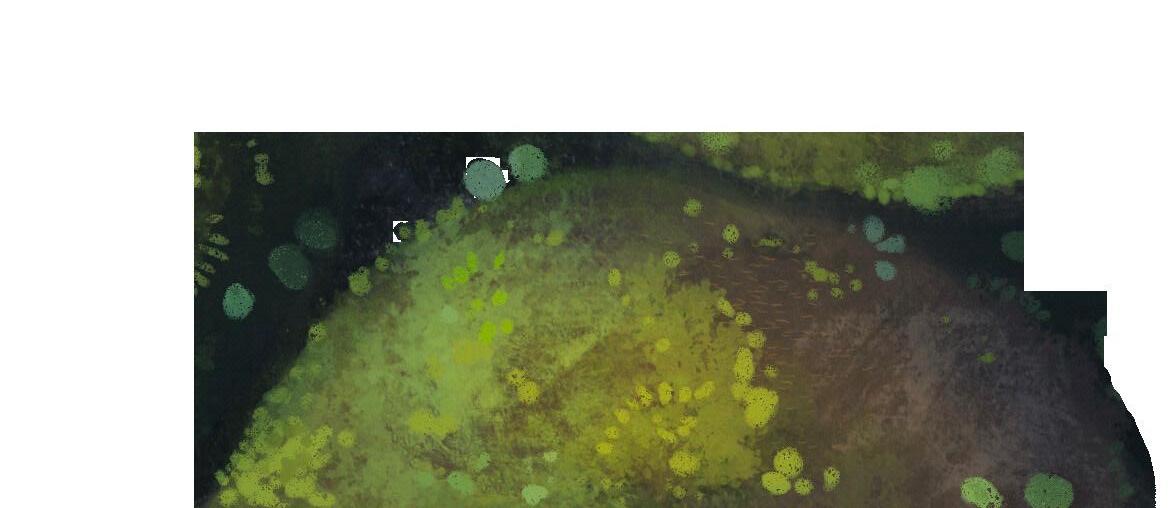
the world in. Ashley would notice different flowers, street signs, and fences. She took pictures of and sketched, her lunch, pretty rocks in the area, and blooming flowers. She wanted to make the most of her time there, that final trip with family. She enjoyed every minute of her stay.
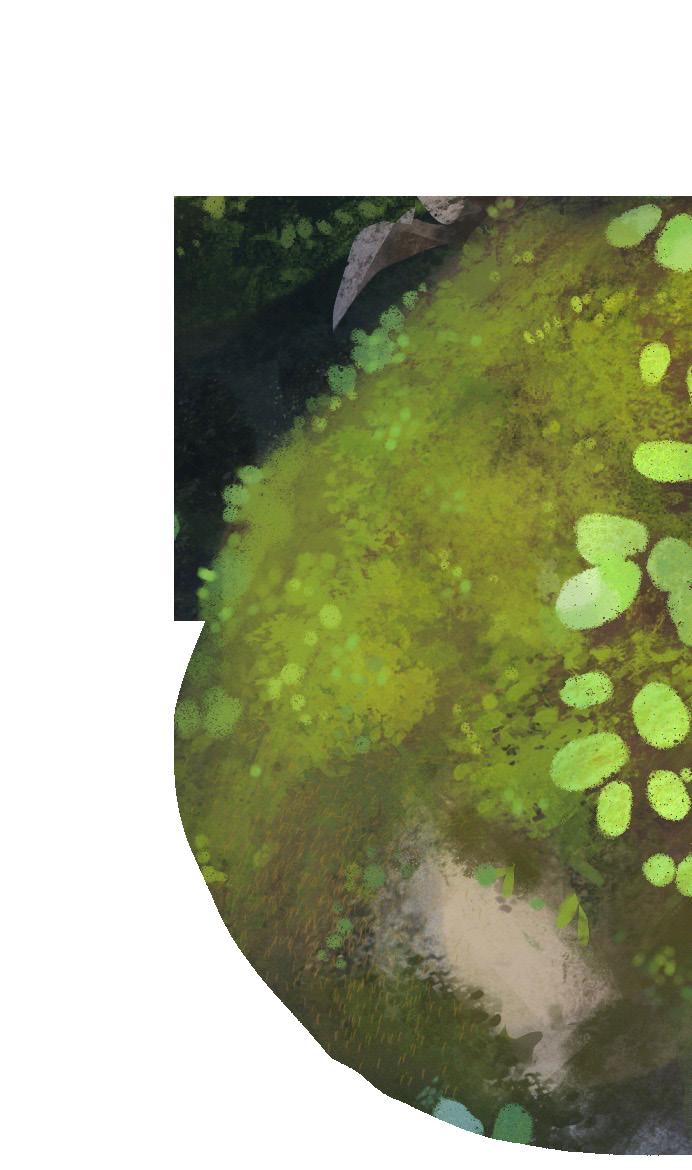

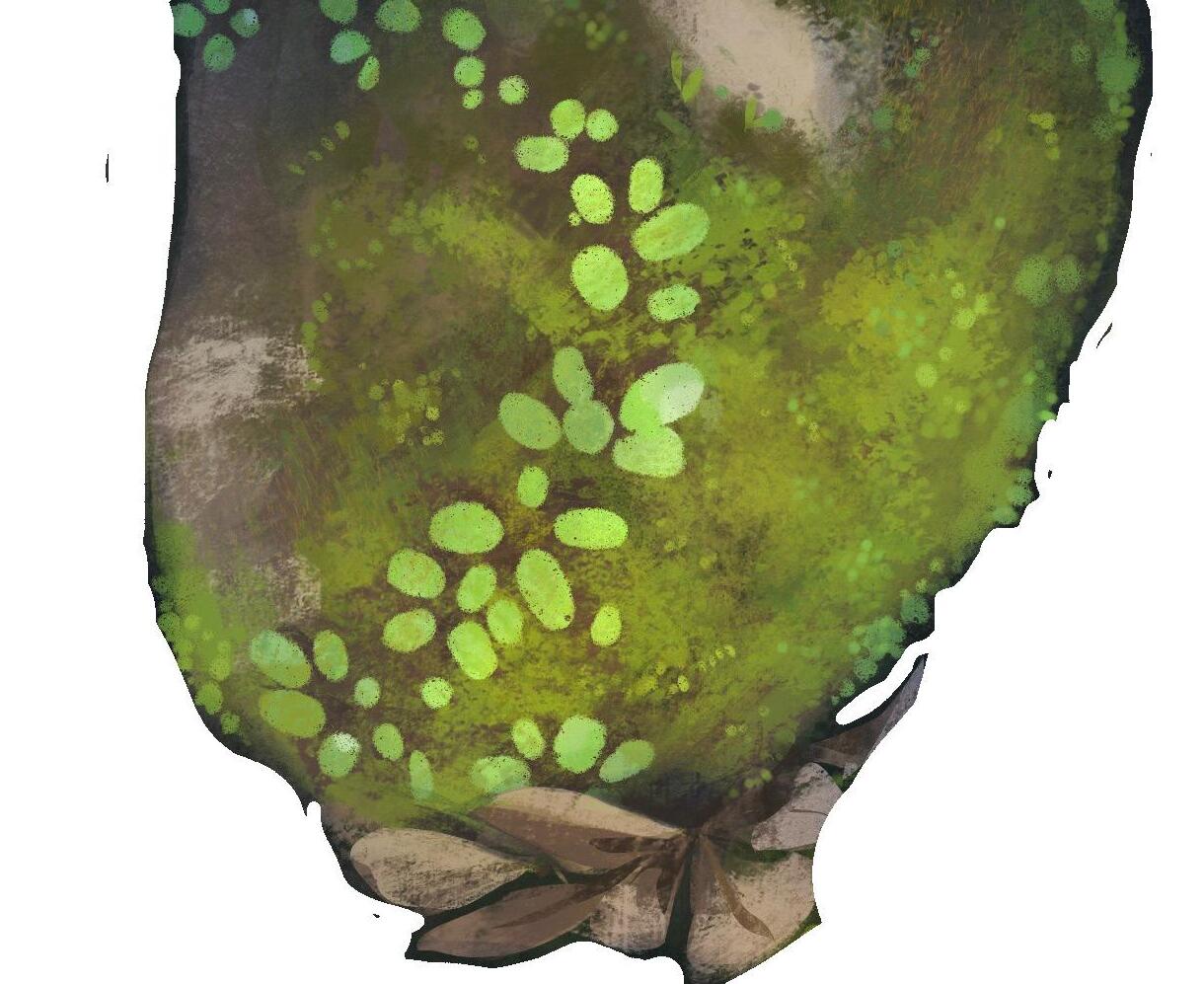
Don’t worry, it’s not sad! It wasn’t a sad trip... It was just more... reflective... “
- ASHLEY
Her drawing helped her slow down that time, she began to notice her family’s feet on the pavement walking down a greenery-lined sidewalk, her parents’ side profiles against the background of a blue sky, and the conversation that flowed around her while she was engrossed in drawing. Being closer to nature, allowed her to subconsciously begin to pay attention to little details about her family that she had perhaps never appreciated before. She slowed down away from the busy modern world and find the little quirks that made her family so precious to her.
Yet, no matter how much Ashley said that trip was not sad, it still is quite a melancholy event. The trip marked a turning point in her life and mindset, and despite looking forward to the future, she left behind her childhood self to enter the adult world. And although she spent her time there enjoying every second, that enjoyment would fade, and reflective mood would instead sink in.
She reflected on her time there, about that trip itself; she would want to go to Japan again if given the chance, to just enjoy a culture very different from that of the United States or even specifically Southern California. The next time that she went, she may be without her family the next time she would travel. Those family trips may be no more.
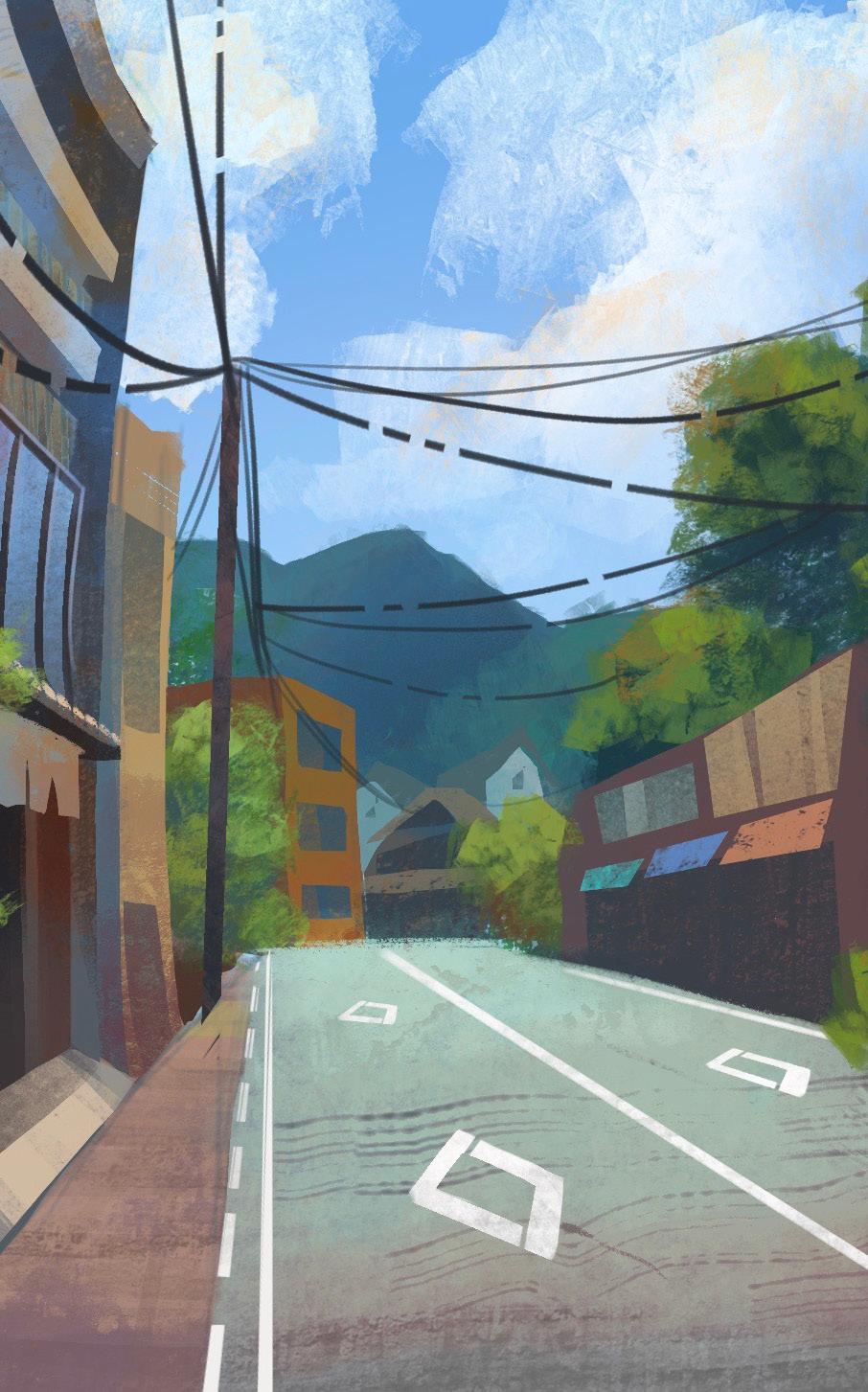
Being with one another was a moment Ashley cherished, and it was strange for her to think about suddenly not having them. Having never been on a trip on her own outside of family, it would be not only strange but also a little bit nostalgic to think about going on an international excursion such as that of Japan by herself. It would be a new experience. Not sad, just… bittersweet. That trip, that final family trip, was not sad, just reflective. It was meaningful, extraordinarily happy, and just special. It was a time for her to just slow down and simply focus her energy on making memories with her family. Out of that last trip, the digital paintings and physical sketches she made would eventually leave her a beautiful memories, all using Ashley’s special skill, her unique touch, her artist’s hand.
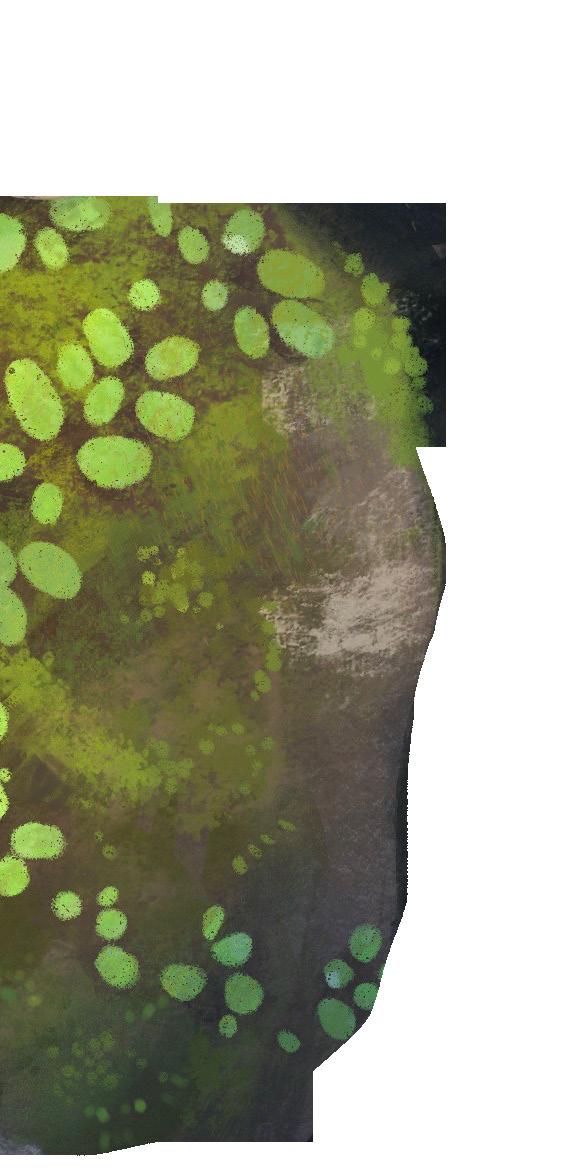
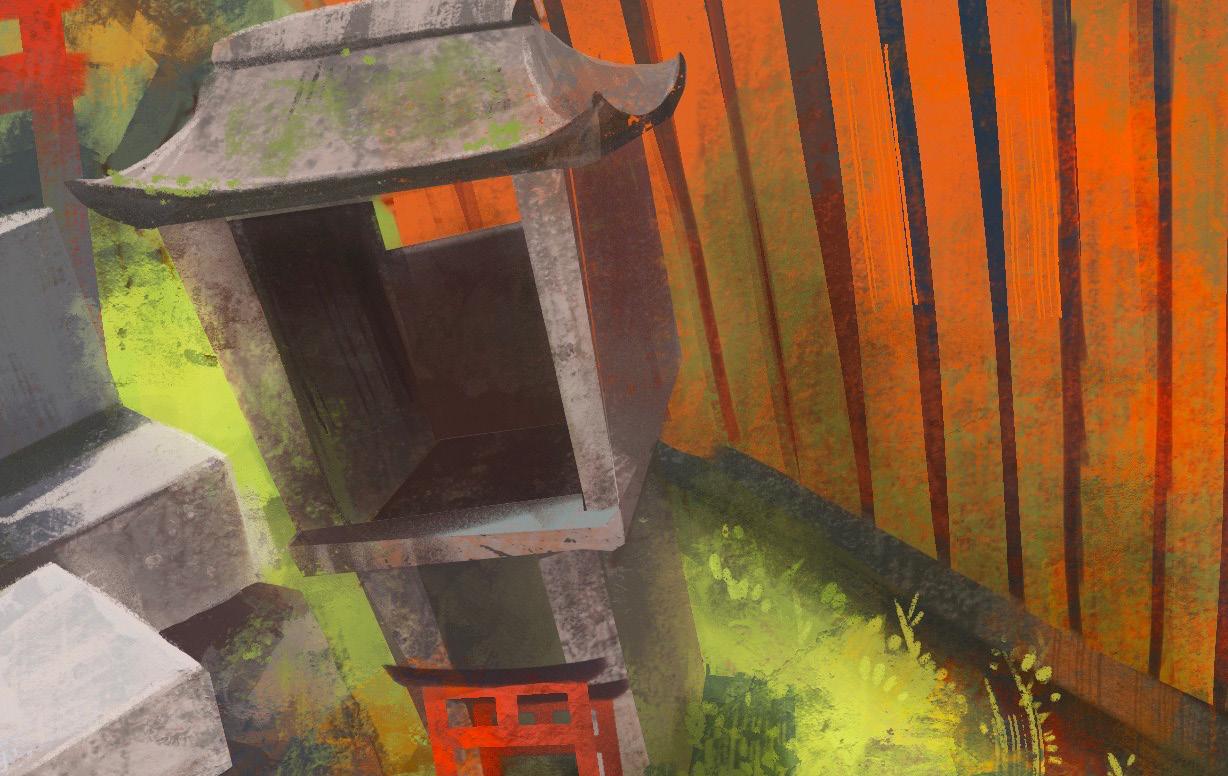

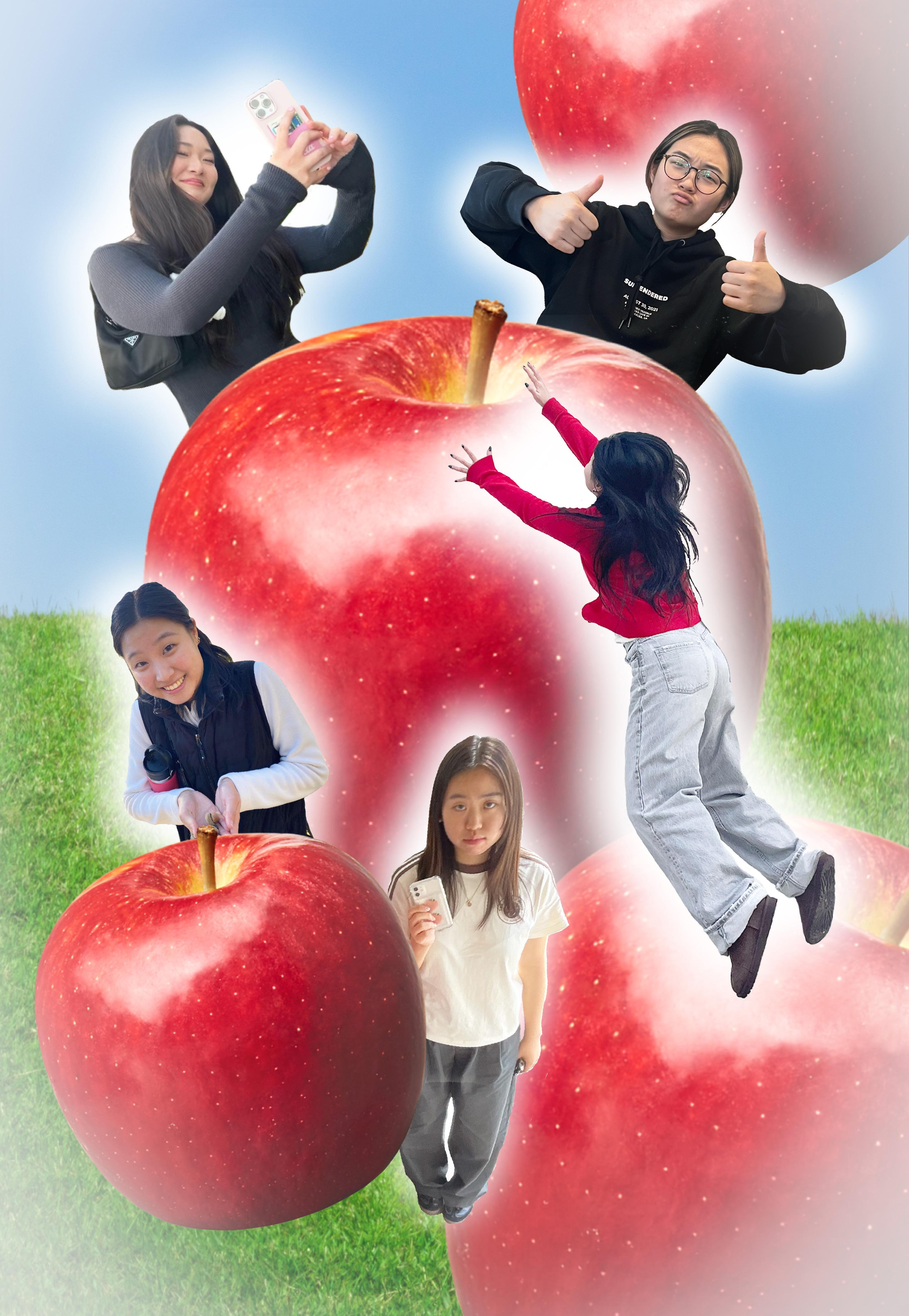

Written by Rachel Lee
Artwork by Yujin Lee
In the kaleidoscopic world of Yujin Lee, friendship takes on the form of a surreal apple orchard, much like the whimsical scene captured in the image. Oversized, vibrant red apples dominate the landscape, serving as more than mere fruits - they’re the embodiment of the connections that have shaped Yujin’s life since her days at Torrance High School and represents Yujin’s personality and characteristic today.
Yujin, by nature a shy and somewhat dependent soul, finds her strength in the small circle of friends she’s cultivated over the years. For her, these relationships are akin to perfectly ripe apples - nourishing, sweet, and essential to her well-being. In a world that often prioritizes quantity over quality, Yujin has chosen depth over breadth, cultivating a handful of profound connections that have stood the test of time. The playful arrangement of Yujin’s friends interacting with giant apples is a perfect metaphor for Yujin’s friend group. Each person, captured in a moment that reflects their personality, represents a vital part of the whole. Like the varied ways they engage with the apples - from embracing them to climbing on them - each friend brings a unique flavor to their group dynamic.

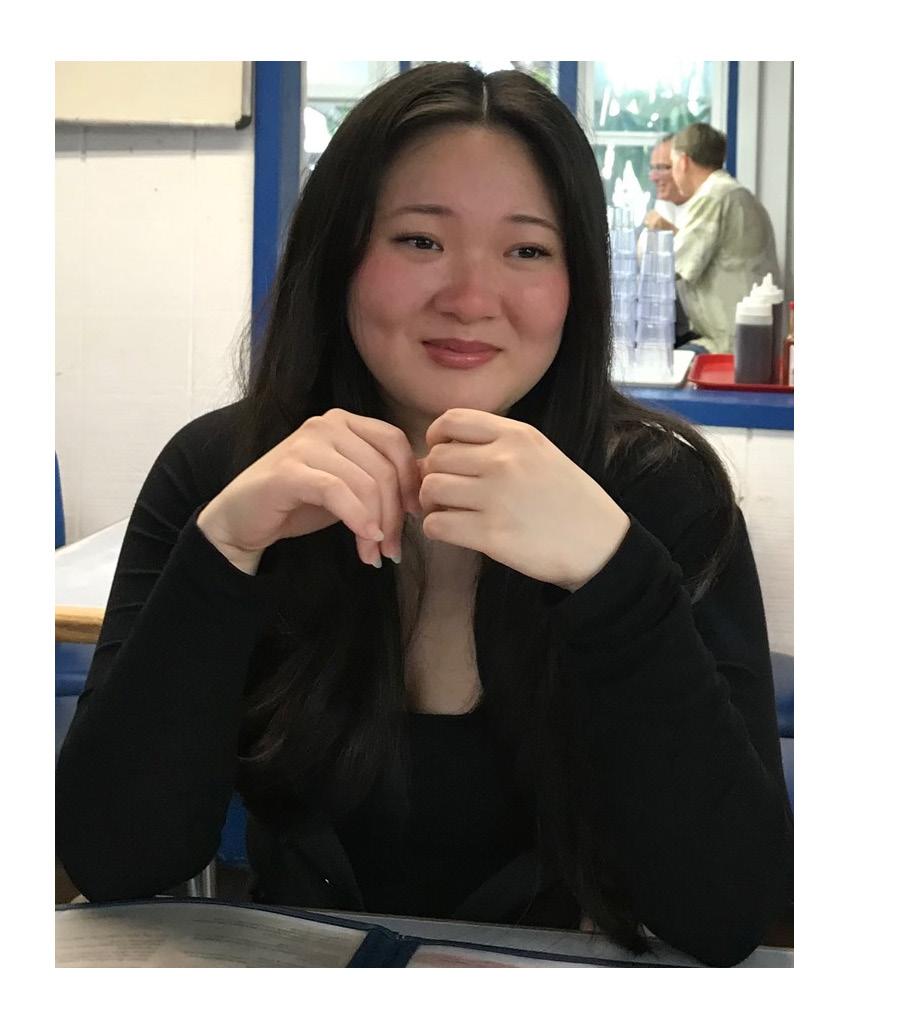




“Each friend bring a unique favor.”
- Yujin Lee
At the top left of this peculiar orchard, we find Sarah, a UCLA graduate with a degree in political science. She’s the one taking a selfie with the apple, a nod to her ability to find joy and humor in any situation. Sarah’s path has led her to pursue a career in law, a field that perfectly aligns with her sharp intellect and determination. Despite the occasional mental breakdown (a running joke), Sarah consistently achieves the goals she sets for herself. Her resilience in the face of life’s challenges inspires Yujin, reminding her that it’s okay to stumble as long as you keep moving forward.
To the right, giving an enthusiastic thumbs up, is Deborah, a Berkeley sociology graduate now pursuing a path in theology. Deborah embodies the concept of an extroverted introvert - someone who can light up a room with her presence but equally cherishes her solitude. Her passion for her studies


is infectious, often inspiring Yujin to explore new ideas and perspectives. Deborah’s balance of social energy and introspection teaches Yujin the value of self-reflection and the importance of pursuing one’s passions wholeheartedly.
At the bottom left, we see Julie, a UCI graduate with aspirations of becoming a teacher. She’s the one carefully examining an apple, a reflection of her nurturing nature. As the mother figure of the group, Julie ensures that everything runs smoothly, from organizing hangouts to offering emotional support. Her friendship with Yujin dates back to fourth grade, providing a sense of continuity and stability that Yujin deeply appreciates. Julie’s dedication to her chosen path in education resonates with Yujin, reminding her of the impact one can have by following their calling.
In the center, we find Esther, a USC graduate with a degree in environmental studies. She’s portrayed standing still, phone in hand, amidst the chaos - a nod to her introspective nature. Despite her academic background, Esther harbors a deeply creative soul. Her love for solitary adventures, like attending music concerts alone, inspires Yujin to step out of her comfort zone. Esther’s boundless curiosity about the world and her willingness to explore new things and places adds an element of excitement to the group, encouraging Yujin to broaden her horizons,

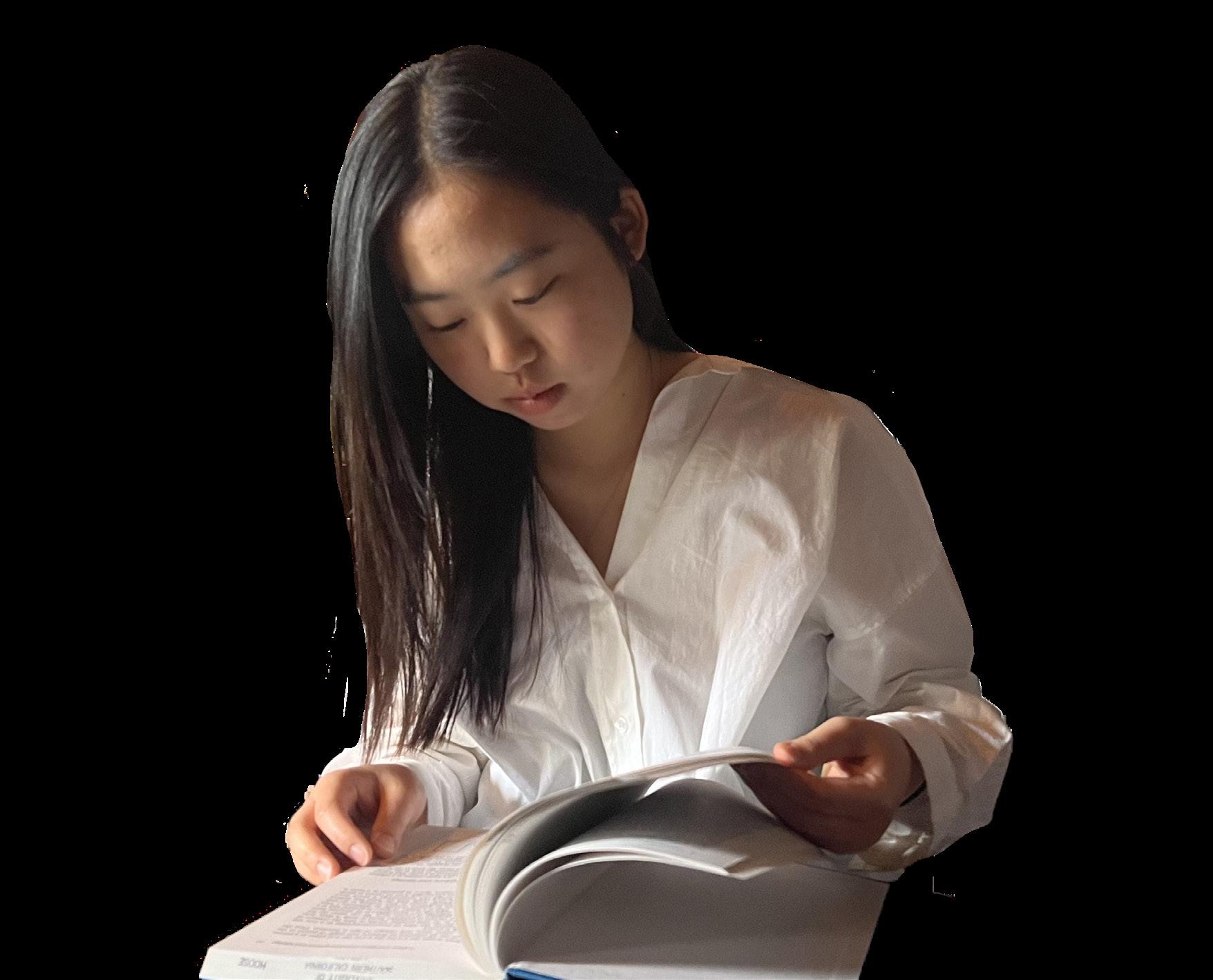

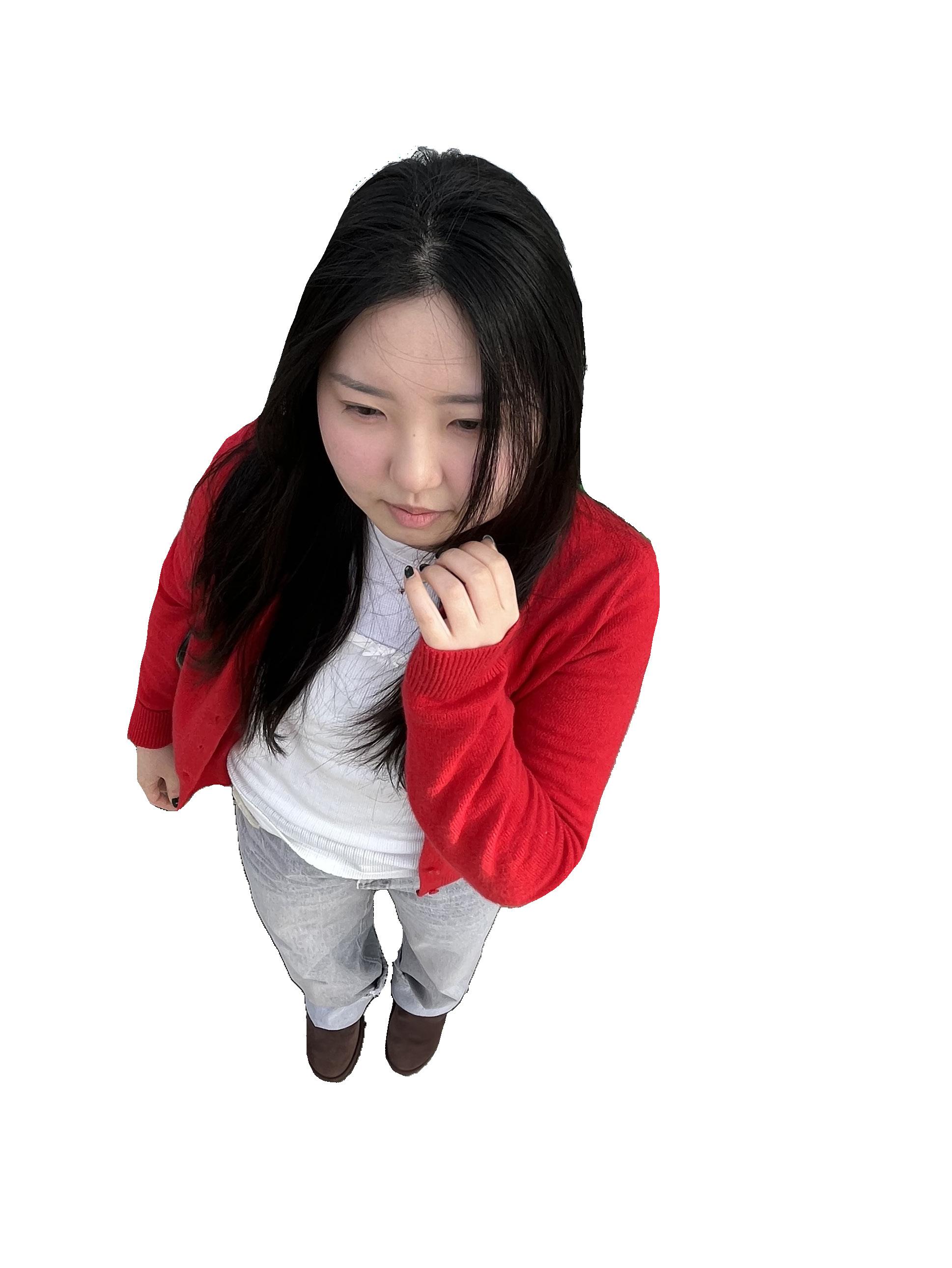
Finally, to the bottom right, we see Stephanie, reaching up towards an apple with unbridled enthusiasm. A nursing student at Mount Saint Mary’s University, Stephanie is the clown of the group, her ENFJ personality shining through in her ability to entertain and connect with anyone and everyone. Her love for food and discovering new cafes often leads the group to exciting culinary adventures. Like Julie, Stephanie can also step into a motherly role when needed, providing a sense of care and comfort that Yujin deeply values.
“You’re the average of the fve people you’re closest to.”
- Yujin Lee
Together, these friends form the core of Yujin’s social world. In their company, she sees reflections of herself - Sarah’s ambition, Deborah’s thoughtfulness, Julie’s nurturing spirit, Esther’s curiosity, and Stephanie’s vivacity. These shared traits and complementary differences create a harmonious blend that allows Yujin to explore different facets of her personality.The backdrop


of their friendship, as represented in the image, is one of innocence and natural beauty. The lush green grass and clear blue sky symbolize the purity and openness of their relationships. In this space, Yujin and her friends are free from the pressures of maintaining a professional facade. They can simply be themselves, embracing their quirks, sharing their dreams, and supporting each other through life’s ups and downs.
For Yujin, these friendships represent the antithesis of toxic relationships. While the apple is often associated with temptation or danger in mythology, in Yujin’s world, it symbolizes health and vitality. Just as “an apple a day keeps the doctor away,” the daily dose of support, laughter, and understanding she receives from her friends keeps her emotional and mental health in check.
As Yujin navigates the complexities of adulthood, her friends serve as constant reminders of where she’s come from and who she truly is. They are her anchors in times of uncertainty, her cheerleaders in moments of triumph, and her companions in the everyday moments that make up the tapestry of life. In the orchard of life, Yujin and her friends have cultivated a garden of trust, shared experiences, and genuine care for one another. Their bond proves that when it comes to friendship, quality truly outshines quantity. Like the oversized apples in the image, their friendship is larger than life - a source of joy, growth, and nourishment that continues to sustain them as they journey through life together.


Written by: Ella Wang
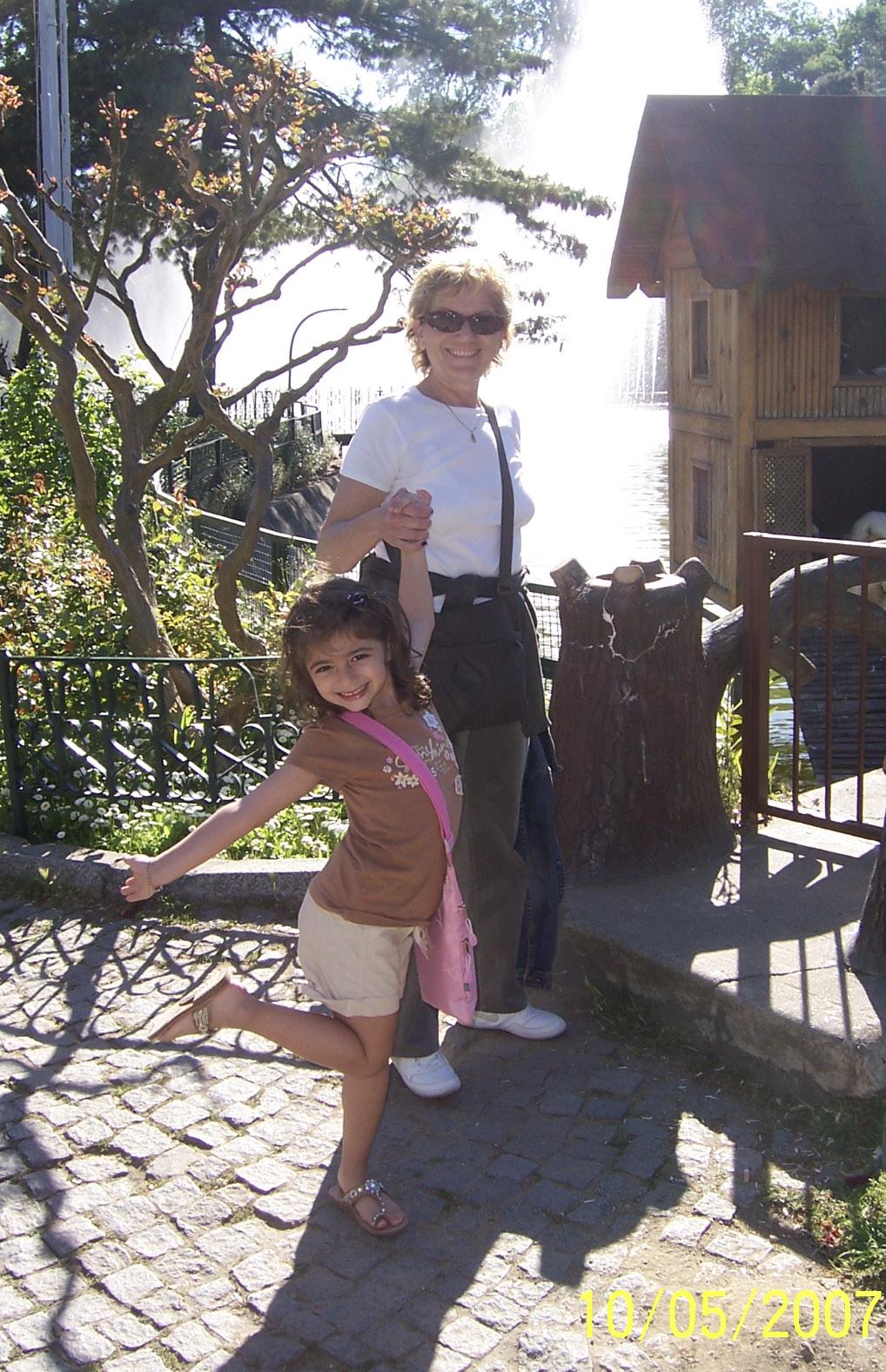
“It’s just like she was my second mom.” - Sim

When Sim lost her grandma within the past year, it felt as if a profound chapter in her life had come to an end. From Sim’s earliest memories, her grandma had always been there— guiding, nurturing, and loving her in ways that left an indelible mark on her heart. Their bond was unbreakable, a relationship rooted in warmth and unconditional love, and it had shaped Sim into the person she is today.
After her grandma’s passing, Sim found herself yearning to honor her, to post something that paid tribute to the woman who had meant so much to her. She began scrolling through her camera roll, hoping to find a photo that captured their connection. But as she went through her phone, a wave of sadness overcame her. There were no recent photos of them together. She realized that the only pictures she had were from when she was a baby, and there were no images of the two of them from her adult years. This realization hit hard—there was a visual void in their later relationship, a gap where memories and moments should have been documented.

For the first time, Sim imagined what it would have been like to see them side by side as adults. It wasn’t just about physical features, though those were undeniably present. What truly resonated with Sim was the energy captured in the photo—her grandma’s quiet joy, her gentle strength. It was the same energy Sim felt she carried within herself. The photo bridged the gap between their generations, and for the first time, Sim felt a deeper, almost spiritual connection to her grandma that went beyond shared memories or physical traits. She saw herself not only as her granddaughter but as a woman who carried forward her grandma’s legacy, warmth, and spirit.

However, during this search, Sim received a message from her mom. It was a picture of her grandma from decades earlier, when she was in her late 20s or early 30s— roughly the same age Sim is now. When Sim looked at this photo, something shifted. For the first time, she saw herself in her grandma. Growing up, Sim had always heard people gush about how beautiful her grandma had been, how her blonde hair and striking features made her a standout. Sim, on the other hand, had always felt like the “ugly duckling.” She didn’t see the resemblance, never felt like she measured up to the beauty people said her grandma had. But now, staring at this image, Sim could finally see it—the connection, the resemblance. The curve of their smiles, the soft warmth in their eyes—it was all there.

One of the most enduring ways Sim stays connected to her grandma is through the memories they created in the kitchen. Her grandma was an exceptional cook, and some of Sim’s most treasured memories revolve around the traditional Turkish dishes her grandma would make for her. One dish, in particular, stands out: köfte, Turkish meatballs. Her grandma had a special way of making them— perfectly seasoned with herbs and spices, grilled until they were juicy and tender. But it wasn’t just the meatballs that made the meals special. Sim remembers the pasta her grandma made to go along with them, drizzled in a homemade sauce that was unique to her—a rich, savory blend of tomatoes, garlic, and herbs that Sim has never tasted anywhere else.
What made those meals even more memorable was how her grandma would sneak vegetables into Sim’s food, knowing that as a child, Sim wasn’t a fan of greens. Her grandma was clever, hiding finely chopped spinach or zucchini in the sauce or blending it into the köfte mixture. Sim would eat the meal without realizing she was getting her dose of veggies.
Sim’s grandma had helped her through difficult periods, including a time when Sim struggled with a borderline eating disorder. Her grandma’s insistence that Sim be well-fed, that she take care of herself, wasn’t just about nourishing her body—it was about making sure Sim knew she was loved and worthy of care. Those meals, with their hidden vegetables and delicious flavors, were her grandma’s way of showing her that love.




Now that her grandma is gone, the realization sparked an even deeper desire within Sim to keep her grandma’s memory alive in tangible, meaningful ways. One of the ways she’s done this is through a tattoo she recently got—a simple yet profound design of her grandma’s initial, “N.O.” in the shape of angel wings on her arm. The tattoo serves as a constant reminder of their bond, a piece of her grandma that Sim can carry with her wherever she goes. For Sim, the tattoo isn’t just about remembrance; it’s about connection. The ink on her skin feels like a permanent thread that ties her to her grandma, a way of keeping her presence close.
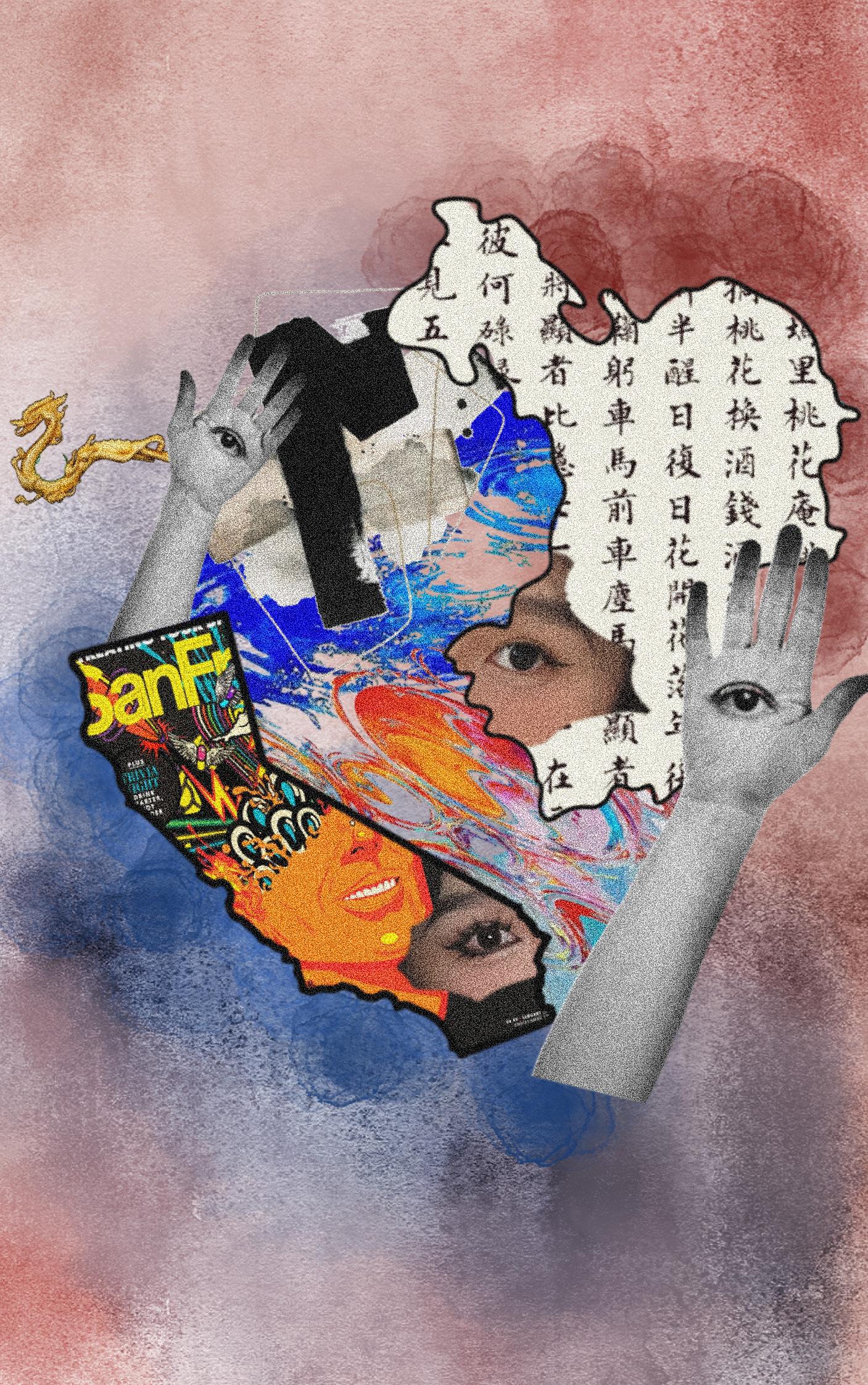
written by Bryn Tronco photography and artwork by Ella Wang
It’s hard to be the new kid at school in 5th grade. It’s even harder when you barely speak English. Back in China, Ella’s school had taught English language, but her lessons out of a textbook hadn’t fully prepared her for speaking English in America. To make matters harder, her school was mostly white, and there weren’t many people who could speak Chinese. It was a stroke of luck that there was one Taiwanese student in her class who could speak mandarin. Ella’s teacher asked the Taiwanese student to help Ella communicate. Ella was grateful for the help, and her skills in listening and understanding English progressed quickly. While she wasn’t able to speak fluently yet, she could understand the conversations happening around her, including ones that she wasn’t meant to. One day, she overheard the Taiwanese girl speaking to another classmate. “Why do I even have to help her? Just don’t come here if you don’t speak English.”
Sixth grade marked the beginning of better friendships. Orientation at the middle school was a day for Ella and the other rising sixth graders to visit their new middle school, accompanied by their parents. When Ella arrived at orientation,
she recognized all the other students from her elementary school --- except for one. The new girl wasn’t speaking to any of the other kids. The girl’s mom walked over to Ella. “Are you Chinese?” the mom asked.
Ella Wang was born in Tianjin, China, and for the first eleven years of her life, she lived in a high-rise apartment with her two parents, a twenty-minute drive from both sets of her grandparents. Then, her father’s work relocated her family to San Hose in the bay area of northern California, where they moved into a single family home in the suburbs of a mostly white neighborhood.
Olivia had moved from China to the US in second grade, but her family moved again right before sixth grade, so Olivia was new to San Hose. Olivia could speak mandarin, and they had a lot in common between their Chinese heritage and both being new to the San Hose area. Ella and Olivia became close friends, and they served as emotional support for each other for that first year. The friendship lasts even now in college while the two are enrolled at different universities, Ella at USC and Olivia at UDUBB.

At Ella’s high school, the majority of students were white, and Ella was among the only international students. Still, she found good company amongst a group of Korean classmates. She learned about Korean culture, and she found that enjoyed listening to k-pop and watching k-dramas. Her favorite band for a few years was Exo, a South Korean-Chinese boy band whose songs blend Korean and Mandarin lyrics. She picked up some Korean language as well which she and her friends used to gossip covertly at school.
Thinking ahead to college, Ella knew she was bound for a university in the United States. Although Ella still has Chinese citizenship alongside her permanent US residency, she didn’t go to high school in China so she wasn’t prepared for the Chinese college entrance exam, which is known to be very difficult. Plus, she says that US colleges are more highly ranked internationally, so people from many countries send their children to the US for college.
“ Why do I even —Classmate
have to help her? Just don’t come here if you don’t speak English.”
As Ella began her college search, she looked mainly for schools in big cities in the US like Los Angeles, New York, and Seattle. She had found growing up in San Hose boring, especially compared to her summers in Tianjin. “San Hose is a place for work,” she says. “There’s not much to do. You can go to the mall, go out to eat, go hiking.” Although she found the content drizzle of rain made Seattle “depressing”, and New York was fun to visit but “too chaotic to live in”, Los Angeles suited her just right. Ella initially considered the University of California, Los Angeles but ended up enrolling at the University of Southern California in the heart of LA.
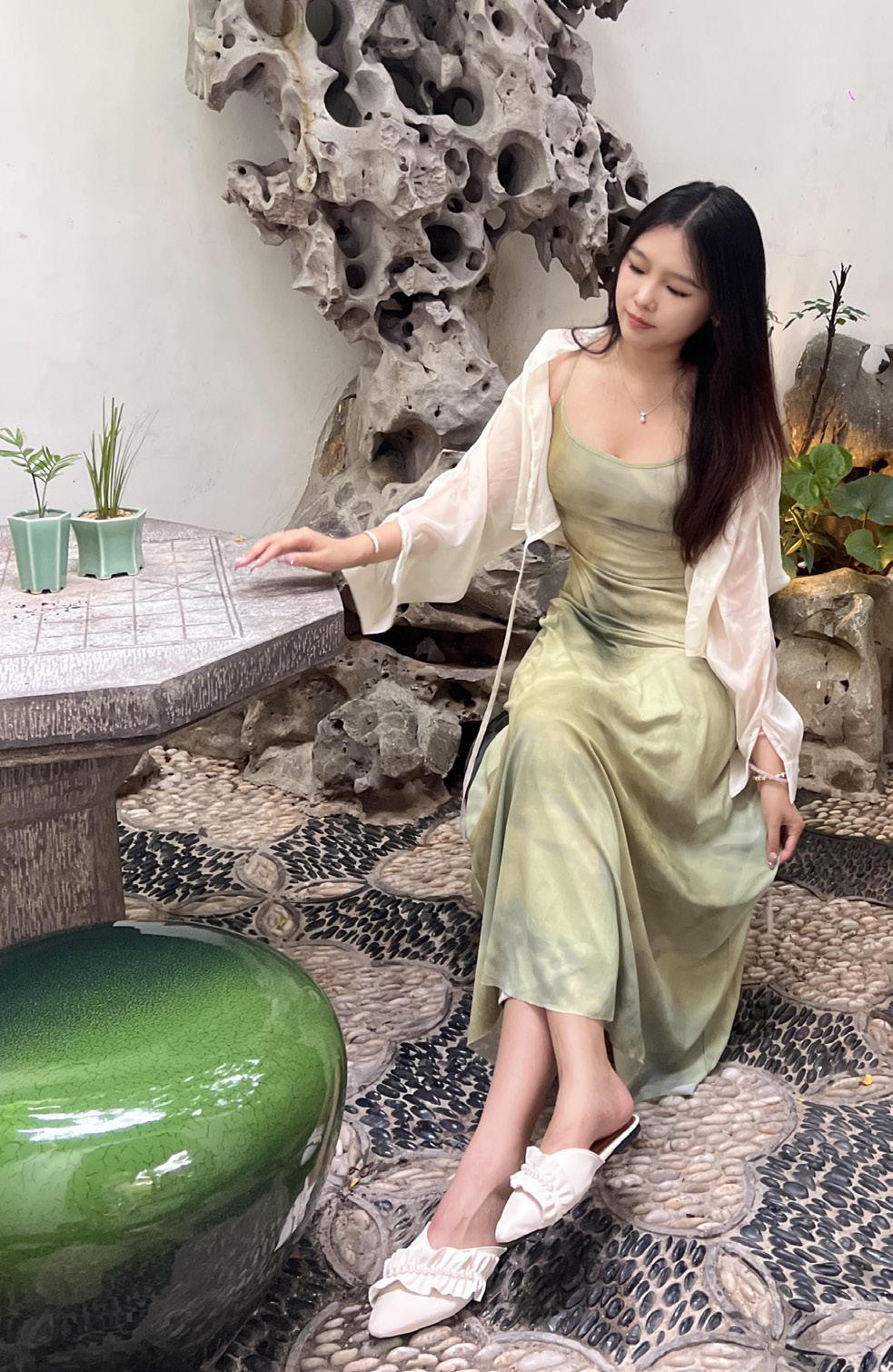
USC is a large private school which prides itself on the diversity of its student body. As such, its student body includes many Chinese students. Now in college, Ella mostly hangs out with friends share her language and her culture. She was surprised to find that her closest friends also shared her specific experience of moving to the states in their teens. Ella says that among Chinese students, there are many different groups. Some are international students, attending US colleges on visa. Others were born in the US with Chinese heritage. And others like Ella were born in China and moved to the United States sometime during their youth or adolescence. Like her, most of Ella’s college friends moved from China to the US while they were in middle school or high school. Ella feels that she can relate more strongly to others with this experience particularly because of how much a secondary school education in the United States changed her perspective.
Ella explains that the Chinese education system is more systematic. In China, your achievement is measured by grades and test scores. For admission to college, your applications are all based on one exam. Meanwhile, in the US, Ella describes the higher education system’s values as more holistic. You’re expected to do volunteer work, extracurriculars, and write essays. Although Ella never attended high school in China, she remembers her elementary school experience as rigorous. Even in her early years of school, she had a lot of homework, much of it consisting of memorization tasks such as copying and rewriting words. Her abilities were judged by her grades, and to encourage students to achieve better grades, her teachers would sometimes announce each student’s grade to the class. Ella says her grades were always good, but she felt sorry for the students who were embarrassed by their low grades. On the weekends, Ella attended extra lessons for English, math, flute, and her favorite class, drawing. The extra classes and heavy workload kept her very busy, but Ella says her experience wasn’t unique. All of her classmates were taking extra lessons on the weekends too.
The one thing that didn’t change in Ella’s life when she moved to the US was her drawing classes. Every weekend, she would commute 30 minutes to take private lessons in drawing. Her teacher was elderly and well-respected. In China, he had been one of the first professors to teach at a top art school. Ella noticed some differences between her Chinese drawing classes and the ones she received in her US high school’s AP art class and in USC’s Design program. “Drawing in China is very technical. Here in the US it’s more free,” she says.
It’s not just a unique educational experience that Ella shares with her college friends; it’s a life experience. Ella says her life has been “half and half.” She lived in China for eleven years and in the US for ten. Growing up in two different locations, each with a unique culture, and adjusting to a new life in the US during her important early teen years led her to feeling a conflict with her identity. “I don’t know where to call home. When I’m in China, I say I’m at home. When I’m in the bay, I’m home. Same in LA.”
“I don’t know where
to call home. When I’m in China, I say I’m at home. When I’m in the bay, I’m home. Same in LA.”
—Ella Wang
Although Ella lives in Los Angeles currently, she’s not cut off from her other homes. She maintains a warm relationship with her parents in the Bay area. Her relationship with her mom in particular is like a friendship. They facetime every weekend, and they talk about “everything” including Ella’s love life and updating each other on gossip. Her parents are also understanding about the fact that Ella grew up differently in the US than they did in China. Ella says they’re not as quick to be accepting about topics like LGBTQ+ and sex education, while she is much more comfortable with these topics, having grown up in California. When she talks to her parents, they usually speak a dialect of Mandarin that is local to Tianjin. With her friends, she speaks a more common Mandarin. She also often incorporates English phrases into her speech. This is another way in which she feels her experience is very mixed between US and Chinese culture.
Almost every summer since she moved to the US, Ella has returned to China to visit her extended family. During high school, there were a few years when Ella wasn’t able to visit China due to travel restrictions that were put in place due to the COIVD pandemic. She says that during this time, her parents still called her grandparents every other week and they were able to stay in touch that way, and she kept up with the latest trends in China through her accounts on Chinese social media platforms. Still, she missed the fun of her trips to China, when she could hang out with her childhood friends who she’s stayed in touch with and go shopping. Now that travel restrictions have lifted, Ella is back to traveling to China every summer, and she’s been working at internships there for two summers. Ella says she’s curious about the differences in work in China and the US, so it’s a goal of hers to try internships in both countries before she begins her career in one location.
There are other reasons that she likes to return to China as well. Although she enjoys the culture in the US where heavy makeup and revealing clothing are seen as personal expression and are accepted, she prefers to buy her clothing in China.
“Asian clothing is cheap and pretty,” she says. “I bring home a full suitcase of new clothing and makeup from China after every summer.” It’s also through style that Ella is connecting back to her Chinese culture. For example, for a final project in her 3D design class, Ella created a set of jewelry inspired by traditional Chinese designs.


